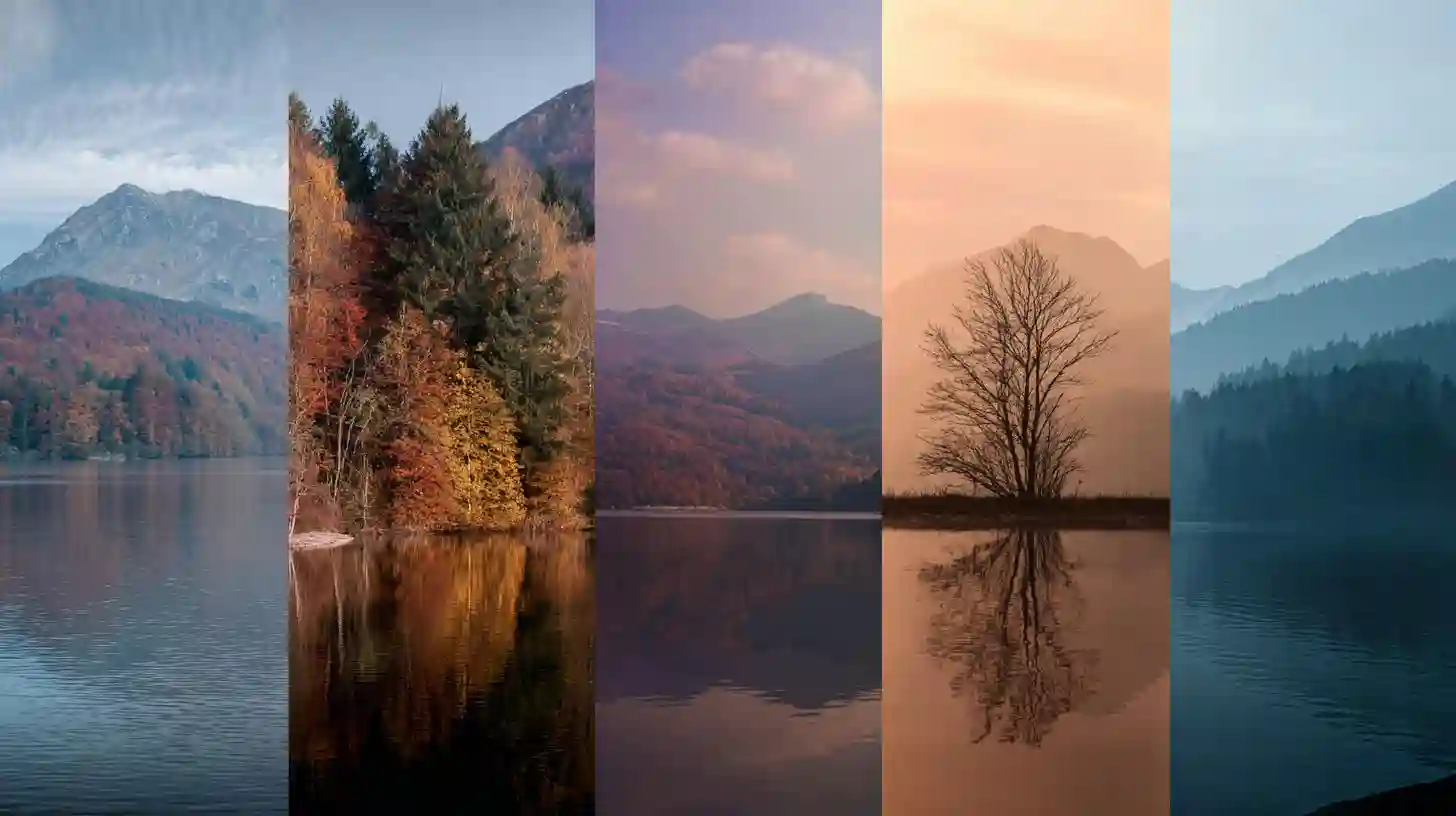
Taking stunning landscape photos requires more than just pointing your camera at a beautiful scene and clicking the shutter. It demands an understanding of light, composition, and the technical aspects of your camera. By honing specific techniques and developing a keen eye for detail, you can elevate your landscape photography to new heights.
One of the most crucial elements in capturing breathtaking landscapes is lighting. The time of day plays a significant role in the overall feel and quality of your photos. Early mornings and late afternoons, often referred to as the golden hours, offer soft, warm light that enhances textures and colors in the landscape. The low-angle sunlight during these times casts long shadows, adding depth and dimension to the scene. During midday, when the sun is directly overhead, the harsh light can create unflattering contrasts and overly bright areas. For some scenes, however, midday light can be used creatively to emphasize certain elements like clouds or water reflections.
The position of the sun is equally important in landscape photography. Shooting into the sun can lead to silhouettes, which are effective for creating dramatic, moody compositions. On the other hand, photographing with the sun behind you tends to bring out more detail in the landscape. If you’re shooting near water, the light can reflect off the surface, enhancing the vibrancy of the colors. Pay close attention to how light interacts with the natural elements around you and adjust your camera settings accordingly to ensure you capture the best exposure.
In addition to lighting, composition is essential in creating visually engaging landscape photographs. One effective technique is the use of leading lines. These natural or man-made elements, such as roads, rivers, or trails, can guide the viewer’s eye through the image, creating a sense of depth and movement. Incorporating these lines helps to balance the composition and makes the photo more dynamic. Another powerful tool is the rule of thirds, where you imagine your image divided into a grid of nine equal parts. By placing key elements of the landscape along these lines or at their intersections, you can create a more harmonious and balanced photo.
When capturing a landscape, foreground interest is also vital. Including objects like rocks, flowers, or trees in the foreground gives your photo a sense of scale and perspective. This adds depth to the image and draws the viewer’s eye into the frame, encouraging them to explore the entire scene. Always be mindful of how the foreground interacts with the background elements. A cluttered or distracting foreground can take attention away from the main subject of the photo.
Another essential aspect of landscape photography is depth of field. A deep depth of field, where both the foreground and background are in focus, is often desirable in landscape images. To achieve this, you’ll need to use a smaller aperture (higher f-stop number), which increases the area in focus. However, be mindful of your shutter speed when using smaller apertures. You may need to use a tripod to avoid camera shake, especially in low-light conditions. A tripod is a must-have accessory for landscape photographers, as it helps to stabilize the camera during longer exposures, ensuring sharp images.
When it comes to post-processing, fine-tuning your photos can make a world of difference. Adjusting the exposure, contrast, and saturation can help bring out the colors and details that may not have been fully captured in-camera. Be careful not to overdo it, as excessive editing can make the image appear unnatural. It’s often best to make subtle adjustments that enhance the photo without altering its inherent beauty. Additionally, using software to correct lens distortion and straighten horizons can help improve the overall quality of your landscape shots.
Lastly, patience is a vital skill in landscape photography. Nature is unpredictable, and sometimes the perfect shot requires waiting for the right conditions to align. This might mean waiting for the clouds to part, the sun to set just right, or the wind to calm down for a still reflection. Being present in the moment and observing the environment around you allows you to anticipate when and where the light will be most favorable, giving you the opportunity to capture the landscape at its best.
Mastering landscape photography takes practice, but by paying attention to lighting, composition, and camera settings, you can create stunning images that evoke emotion and transport viewers to another place. By refining your technique and allowing patience to guide your process, you'll be able to take your landscape photography to the next level.